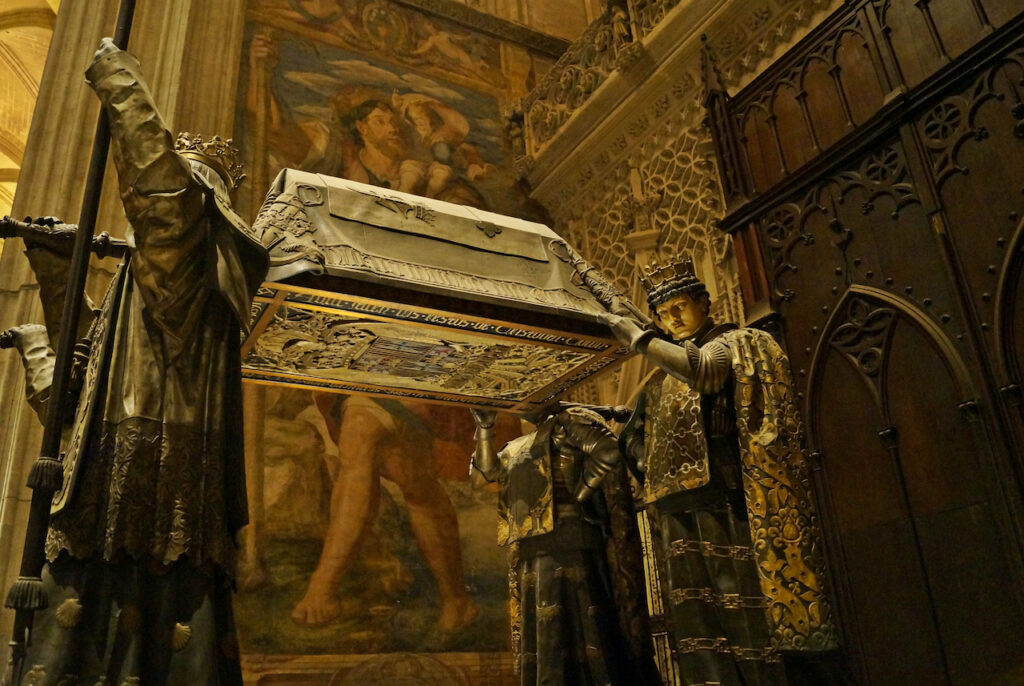Due to my Italian heritage — which may be hard to tell, given my Lithuanian surname — and my connection to and gratitude for the Knights of Columbus, I try to find a way to mark Columbus Day each year.
Two weeks ago, I visited with Knights of Columbus Council 367 for the celebration of their 125th anniversary. They are known as “The First Council in the South,” having been established just 17 years after Blessed Michael J. McGivney founded the Knights of Columbus.
Since their founding, the Knights of Columbus, with courage and joy, have lived out the principles of charity, unity, fraternity and patriotism in the context of our Catholic faith. This fraternal organization supports Catholic men to live their faith at home, in their parish, at work and in their community.
To demonstrate their loyalty to their country and to their faith, the Knights took as their patron Christopher Columbus, recognized as a Catholic and long celebrated as the discoverer of America.
While Christopher Columbus was not without flaws, the practice of his faith was genuine. As Father F. Joseph Magri wrote in the September 1928 issue of The Catholic Knight, “Columbus was first and last and under all circumstances a fervent and consistent Catholic.”
So, it is understandable why statues were sculpted and erected of Columbus in communities throughout the United States in the 1920s. Americans, especially those of Italian and/or Catholic ancestry, were proud of him and his accomplishments.
Sadly, in the events that unfolded in the summer of 2020, statues of historic figures were removed in many localities. Among the casualties was the Columbus statue which had stood in Richmond’s Byrd Park since 1925. It was toppled, thrown into the lake, and then removed by the city.
Not unlike Columbus’ four arduous journeys, the journey in getting approval for the erection of the Richmond statue was fraught with obstacles. The Italian Catholic immigrants, many of whom immigrated to the Richmond area because of their skills as stone masons, were looked upon with suspicion and were not always welcomed.
What they experienced was nothing new. The turn of the last century was a time in our nation’s history when Catholic immigrants to the U.S. from Italy and other parts of Europe were not always welcomed with open arms.
By the 1920s, with servicemen having returned from World War I, a group of Italian-Americans in Richmond wanted to show their love for the U.S. To emphasize their patriotism, they commissioned Ferruccio Legnaioli to sculpt a statue of someone who was important to discovering the New World that eventually led to the founding of this nation. They envisioned the statue being placed on Monument Avenue.
Pressured by members of the Patriotic Welfare Committee, which included members of the Ku Klux Klan, the city’s committee on buildings, properties and utilities rejected the Columbus statue by a vote of 6-1 on May 28, 1925.
According to Harry Kollatz Jr., writing in the October 2014 Richmond Magazine, the Patriotic Welfare Committee “decried Columbus as a foreigner, a Roman Catholic, and wrongly credited as finding the New World. They gave the Vikings that credit.”
But, finally, on June 8, the common council’s committee on streets approved erection of the monument not for Monument Avenue, but for Byrd Park.
In his article, Kollatz included a 1995 statement from Bill Jenkins, an aficionado of Legnaioli: “It was kind of a grudging Richmond acceptance. The City Council figured it was too far out of the city for anybody to see it.”
Over the following decades Richmond continued to grow. The writer noted that the Boulevard Bridge was also completed in 1925, and expansion of the city toward the west “ultimately made the statue one of the most visible in Richmond.”
It saddens me that a statue which was meant to express patriotism and the connection of the Italian community with our nation would be torn down nearly a hundred years later. It was a symbol of patriotism and participation of a marginalized group, most of whom were Catholic, but is now seen as offensive to marginalized groups.
The absence of the statue should not diminish our observance of Columbus Day. However, its absence should remind us to celebrate our Catholic heroes — especially when they are an important part of our country’s and our Church’s history.

